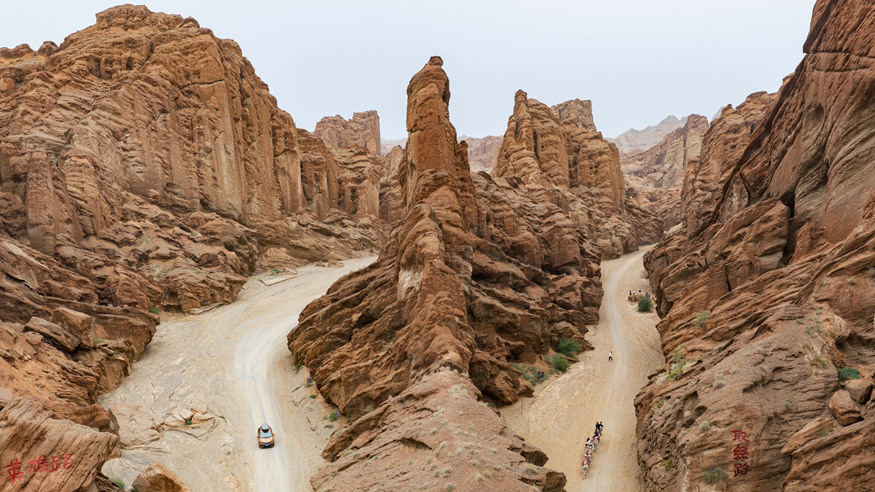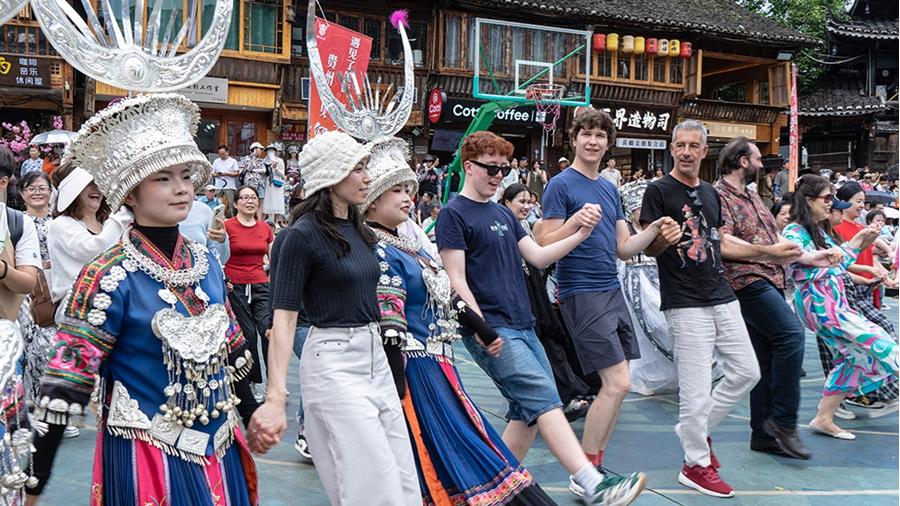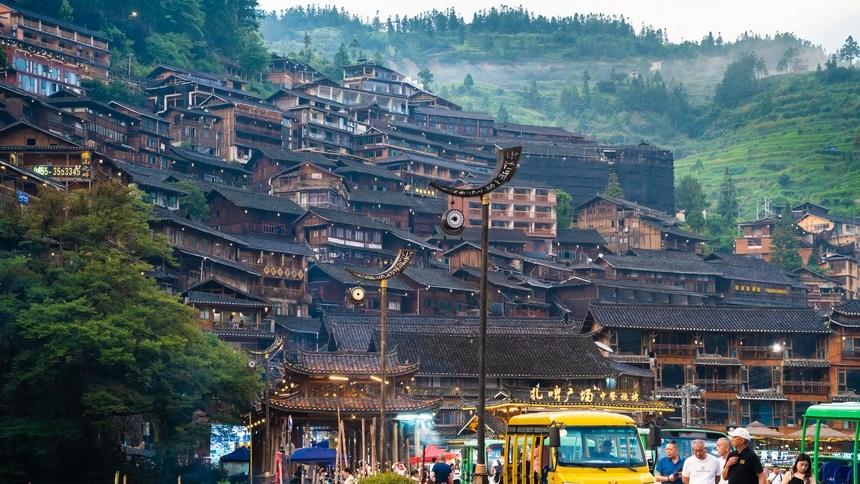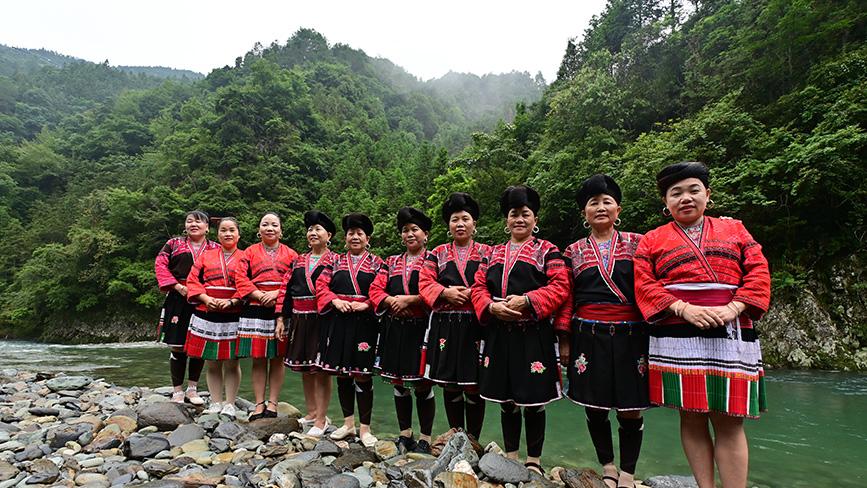Traditional handicrafts of Tibetan carpet weaving inject momentum into rural revitalization in NW China

An employee works on a Tibetan carpet at a workshop of Shengyuan carpet group in Xining, northwest China's Qinghai Province, July 21, 2025. Located in Chengzhong District of Xining City, Shengyuan carpet group is an enterprise specializing in the design and production of Tibetan carpets. Since its establishment in 2007, the company has recruited people from surrounding areas, with 90% of its employees coming from nearby villages and including various ethnic minorities such as Tibetan and Tu ethnic groups.
Tibetan carpet is a traditional handicraft on the Qinghai-Tibetan Plateau with a history of more than 2,000 years. The fine yak and sheep wool and the delicate weaving skills and patterns made the handmade products popular among overseas and domestic customers. In 2006, the weaving skills of Tibetan carpets from Jiaya Village, a village of Huangzhong County in northwest China's Qinghai Province, were listed as a national intangible cultural heritage of China.
In recent years, Qinghai has guided Tibetan carpet enterprises to integrate modern technology and traditional handicrafts, which injects new momentum into rural revitalization while preserving traditional skills. (Xinhua/Qi Zhiyue)
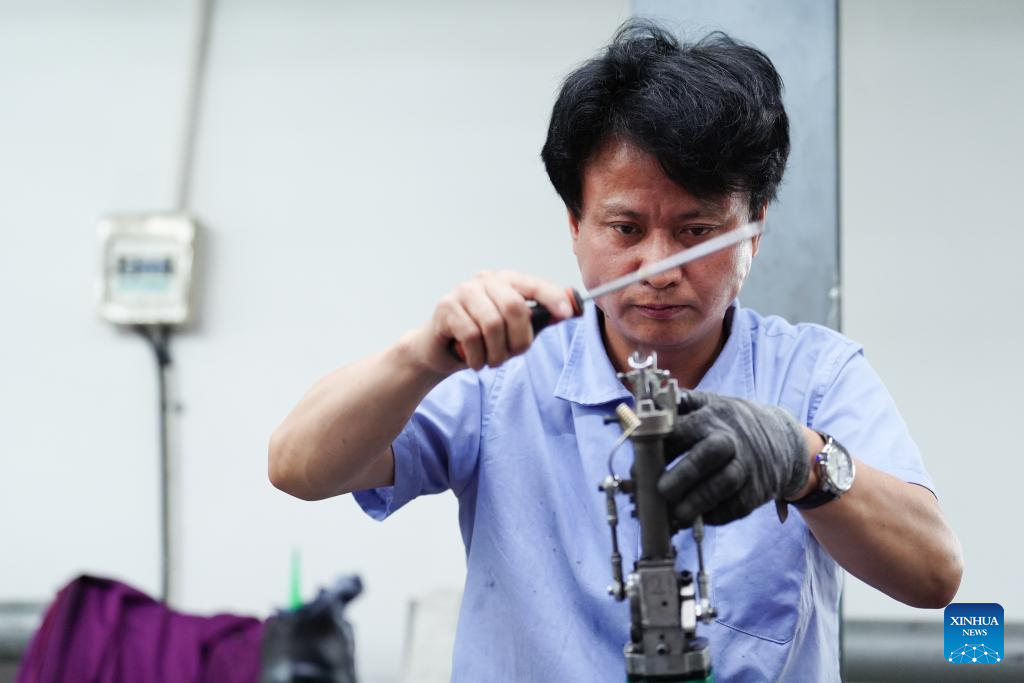
An employee checks a tool for the production of Tibetan carpet at a workshop of Shengyuan carpet group in Xining, northwest China's Qinghai Province, July 21, 2025. Located in Chengzhong District of Xining City, Shengyuan carpet group is an enterprise specializing in the design and production of Tibetan carpets. Since its establishment in 2007, the company has recruited people from surrounding areas, with 90% of its employees coming from nearby villages and including various ethnic minorities such as Tibetan and Tu ethnic groups.
Tibetan carpet is a traditional handicraft on the Qinghai-Tibetan Plateau with a history of more than 2,000 years. The fine yak and sheep wool and the delicate weaving skills and patterns made the handmade products popular among overseas and domestic customers. In 2006, the weaving skills of Tibetan carpets from Jiaya Village, a village of Huangzhong County in northwest China's Qinghai Province, were listed as a national intangible cultural heritage of China.
In recent years, Qinghai has guided Tibetan carpet enterprises to integrate modern technology and traditional handicrafts, which injects new momentum into rural revitalization while preserving traditional skills. (Xinhua/Qi Zhiyue)
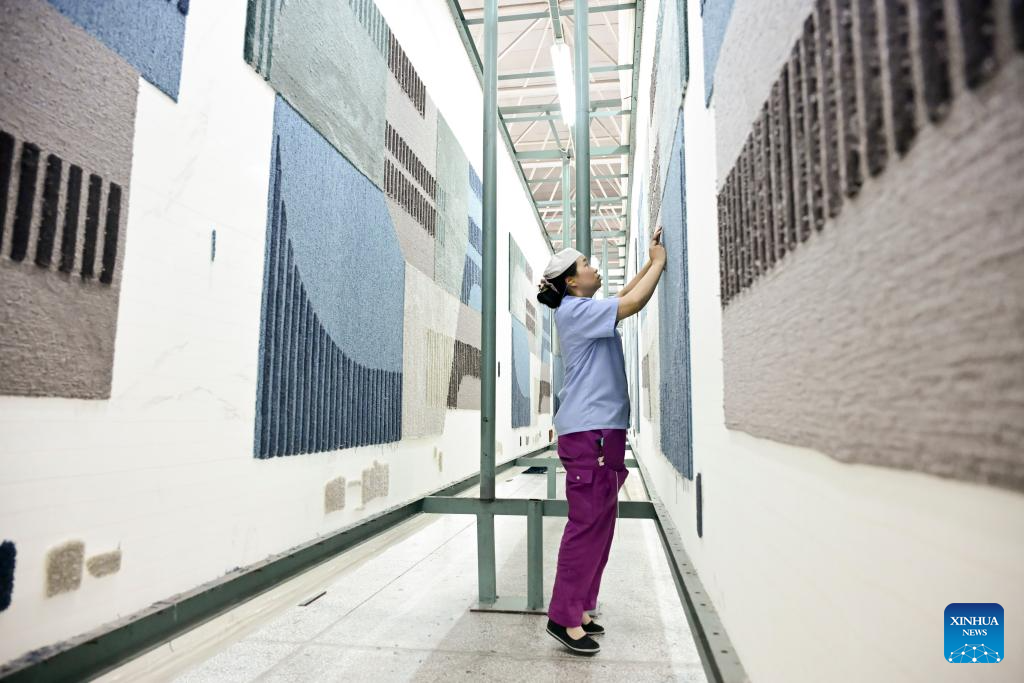
An employee works on a Tibetan carpet at a workshop of Shengyuan carpet group in Xining, northwest China's Qinghai Province, July 21, 2025. Located in Chengzhong District of Xining City, Shengyuan carpet group is an enterprise specializing in the design and production of Tibetan carpets. Since its establishment in 2007, the company has recruited people from surrounding areas, with 90% of its employees coming from nearby villages and including various ethnic minorities such as Tibetan and Tu ethnic groups.
Tibetan carpet is a traditional handicraft on the Qinghai-Tibetan Plateau with a history of more than 2,000 years. The fine yak and sheep wool and the delicate weaving skills and patterns made the handmade products popular among overseas and domestic customers. In 2006, the weaving skills of Tibetan carpets from Jiaya Village, a village of Huangzhong County in northwest China's Qinghai Province, were listed as a national intangible cultural heritage of China.
In recent years, Qinghai has guided Tibetan carpet enterprises to integrate modern technology and traditional handicrafts, which injects new momentum into rural revitalization while preserving traditional skills. (Xinhua/Qi Zhiyue)
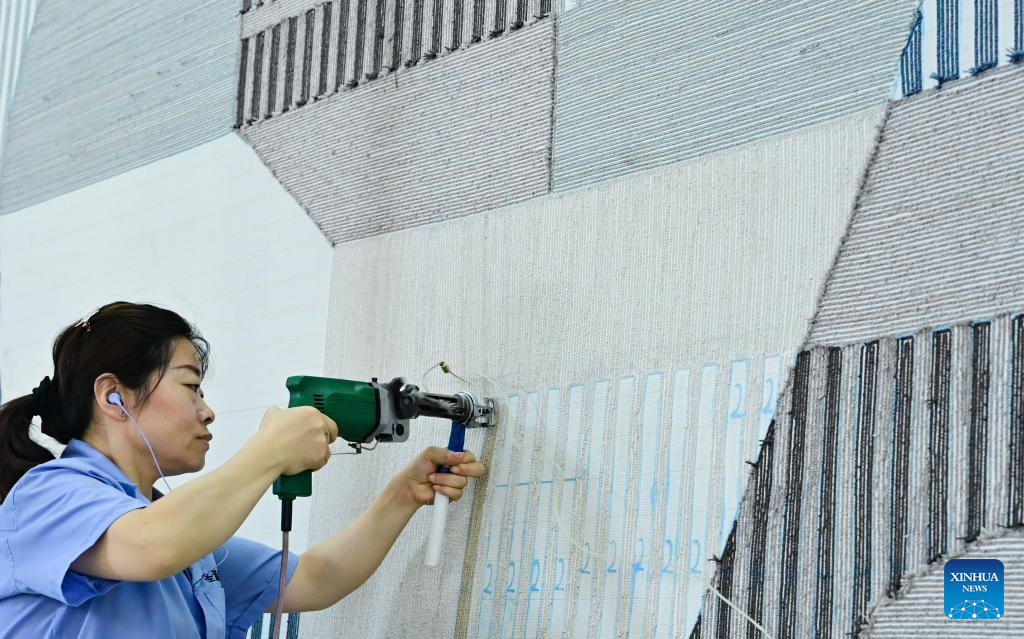
An employee works on a Tibetan carpet at a workshop of Shengyuan carpet group in Xining, northwest China's Qinghai Province, July 21, 2025. Located in Chengzhong District of Xining City, Shengyuan carpet group is an enterprise specializing in the design and production of Tibetan carpets. Since its establishment in 2007, the company has recruited people from surrounding areas, with 90% of its employees coming from nearby villages and including various ethnic minorities such as Tibetan and Tu ethnic groups.
Tibetan carpet is a traditional handicraft on the Qinghai-Tibetan Plateau with a history of more than 2,000 years. The fine yak and sheep wool and the delicate weaving skills and patterns made the handmade products popular among overseas and domestic customers. In 2006, the weaving skills of Tibetan carpets from Jiaya Village, a village of Huangzhong County in northwest China's Qinghai Province, were listed as a national intangible cultural heritage of China.
In recent years, Qinghai has guided Tibetan carpet enterprises to integrate modern technology and traditional handicrafts, which injects new momentum into rural revitalization while preserving traditional skills. (Xinhua/Qi Zhiyue)

Tibetan carpets are displayed at a workshop of Shengyuan carpet group in Xining, northwest China's Qinghai Province, July 21, 2025. Located in Chengzhong District of Xining City, Shengyuan carpet group is an enterprise specializing in the design and production of Tibetan carpets. Since its establishment in 2007, the company has recruited people from surrounding areas, with 90% of its employees coming from nearby villages and including various ethnic minorities such as Tibetan and Tu ethnic groups.
Tibetan carpet is a traditional handicraft on the Qinghai-Tibetan Plateau with a history of more than 2,000 years. The fine yak and sheep wool and the delicate weaving skills and patterns made the handmade products popular among overseas and domestic customers. In 2006, the weaving skills of Tibetan carpets from Jiaya Village, a village of Huangzhong County in northwest China's Qinghai Province, were listed as a national intangible cultural heritage of China.
In recent years, Qinghai has guided Tibetan carpet enterprises to integrate modern technology and traditional handicrafts, which injects new momentum into rural revitalization while preserving traditional skills. (Xinhua/Qi Zhiyue)
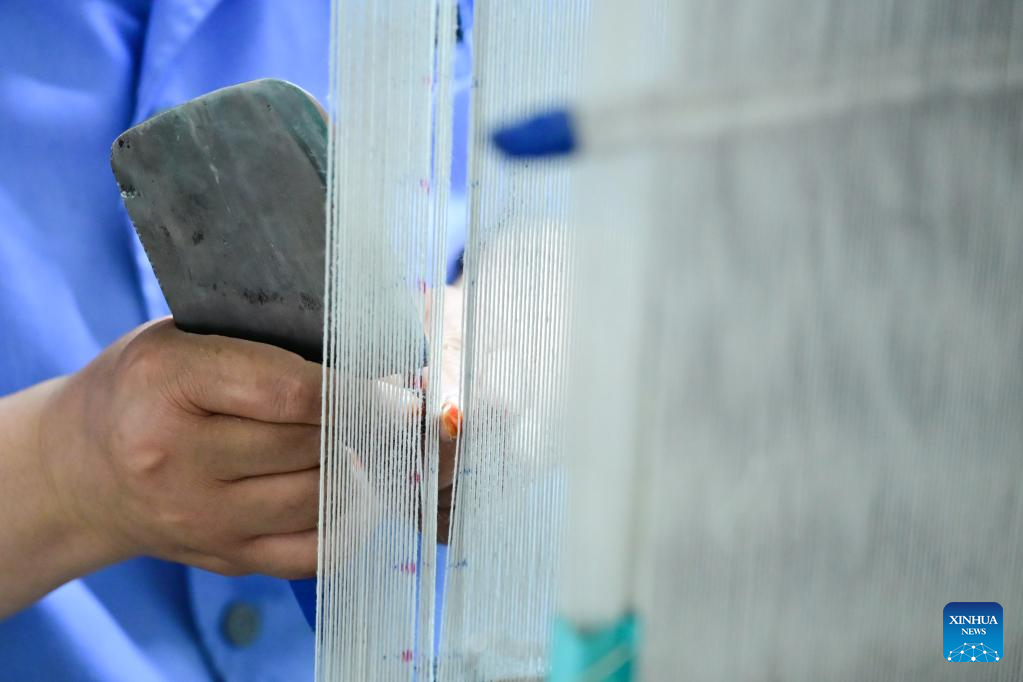
An employee sorts yarns at a workshop of Shengyuan carpet group in Xining, northwest China's Qinghai Province, July 21, 2025. Located in Chengzhong District of Xining City, Shengyuan carpet group is an enterprise specializing in the design and production of Tibetan carpets. Since its establishment in 2007, the company has recruited people from surrounding areas, with 90% of its employees coming from nearby villages and including various ethnic minorities such as Tibetan and Tu ethnic groups.
Tibetan carpet is a traditional handicraft on the Qinghai-Tibetan Plateau with a history of more than 2,000 years. The fine yak and sheep wool and the delicate weaving skills and patterns made the handmade products popular among overseas and domestic customers. In 2006, the weaving skills of Tibetan carpets from Jiaya Village, a village of Huangzhong County in northwest China's Qinghai Province, were listed as a national intangible cultural heritage of China.
In recent years, Qinghai has guided Tibetan carpet enterprises to integrate modern technology and traditional handicrafts, which injects new momentum into rural revitalization while preserving traditional skills. (Xinhua/Qi Zhiyue)

An employee works on a Tibetan carpet at a workshop of Shengyuan carpet group in Xining, northwest China's Qinghai Province, July 21, 2025. Located in Chengzhong District of Xining City, Shengyuan carpet group is an enterprise specializing in the design and production of Tibetan carpets. Since its establishment in 2007, the company has recruited people from surrounding areas, with 90% of its employees coming from nearby villages and including various ethnic minorities such as Tibetan and Tu ethnic groups.
Tibetan carpet is a traditional handicraft on the Qinghai-Tibetan Plateau with a history of more than 2,000 years. The fine yak and sheep wool and the delicate weaving skills and patterns made the handmade products popular among overseas and domestic customers. In 2006, the weaving skills of Tibetan carpets from Jiaya Village, a village of Huangzhong County in northwest China's Qinghai Province, were listed as a national intangible cultural heritage of China.
In recent years, Qinghai has guided Tibetan carpet enterprises to integrate modern technology and traditional handicrafts, which injects new momentum into rural revitalization while preserving traditional skills. (Xinhua/Qi Zhiyue)
Photos
Related Stories
- Specialty plateau industries thrive in Xizang's booming economy
- In pics: "three-color lake" in Banbar County, China's Xizang
- China's SOEs to invest over 317 billion yuan for Xizang's development
- Xizang ramps up plateau ecosystem preservation
- Scenery of Sapukonglagabo Mountain in Nagqu City, China's Xizang
- Traditional Dakpo Axie dance performed at scenic area in Nagqu City, China's Xizang
- Medical aids from Liaoning improve local medical treatment level in SW China's Xizang
- Conservation measures help Tibetan antelope migrate in SW China's Xizang
- Achievement made on repairing of Pattra-leaf Scriptures in China's Xizang
- 'Community Care Center' brings warmth to villagers along Lhasa River
Copyright © 2025 People's Daily Online. All Rights Reserved.






